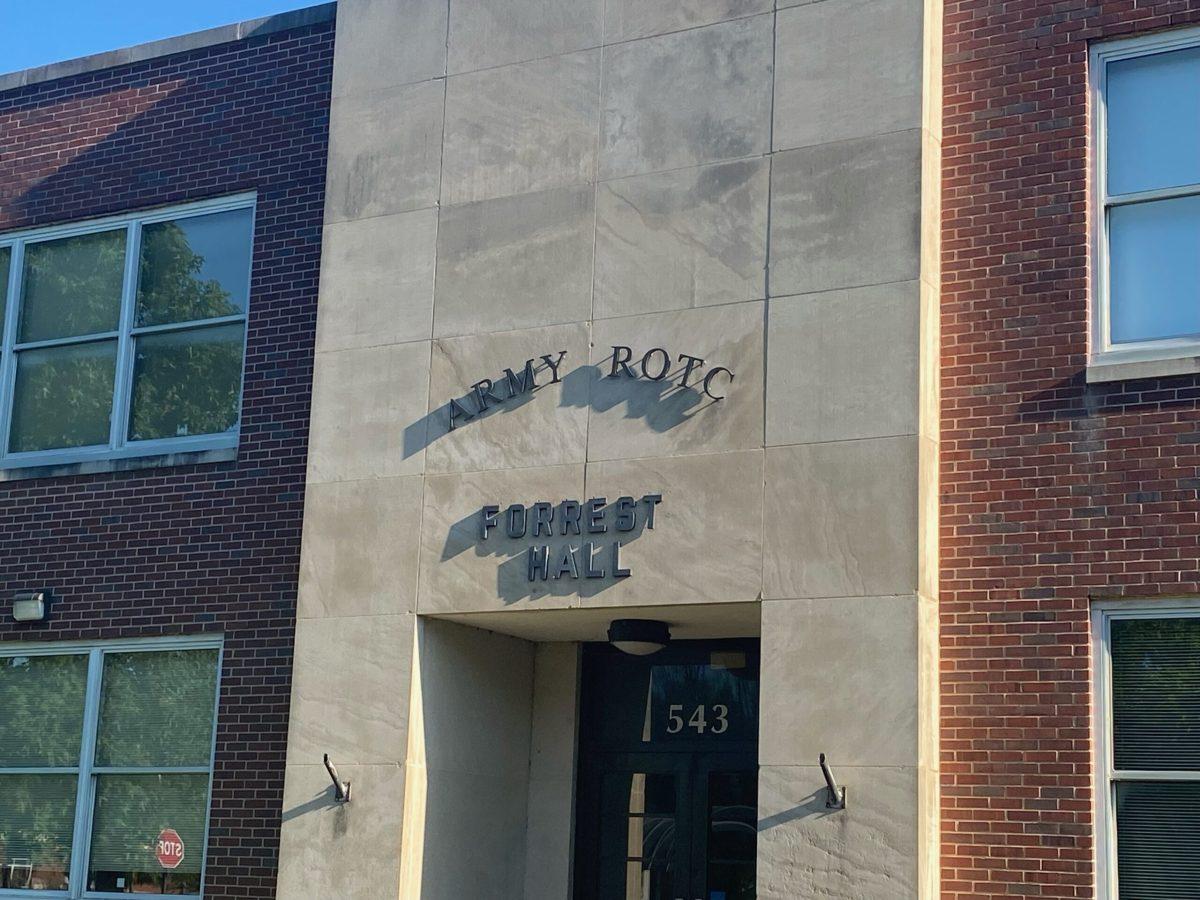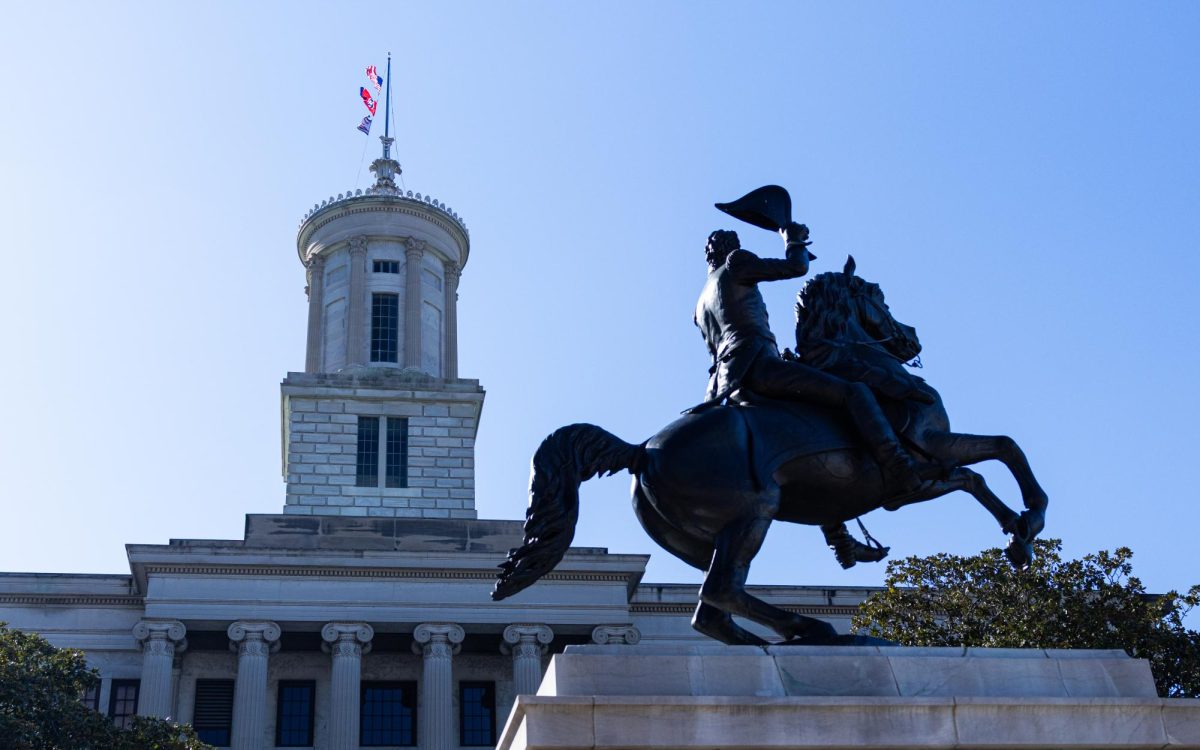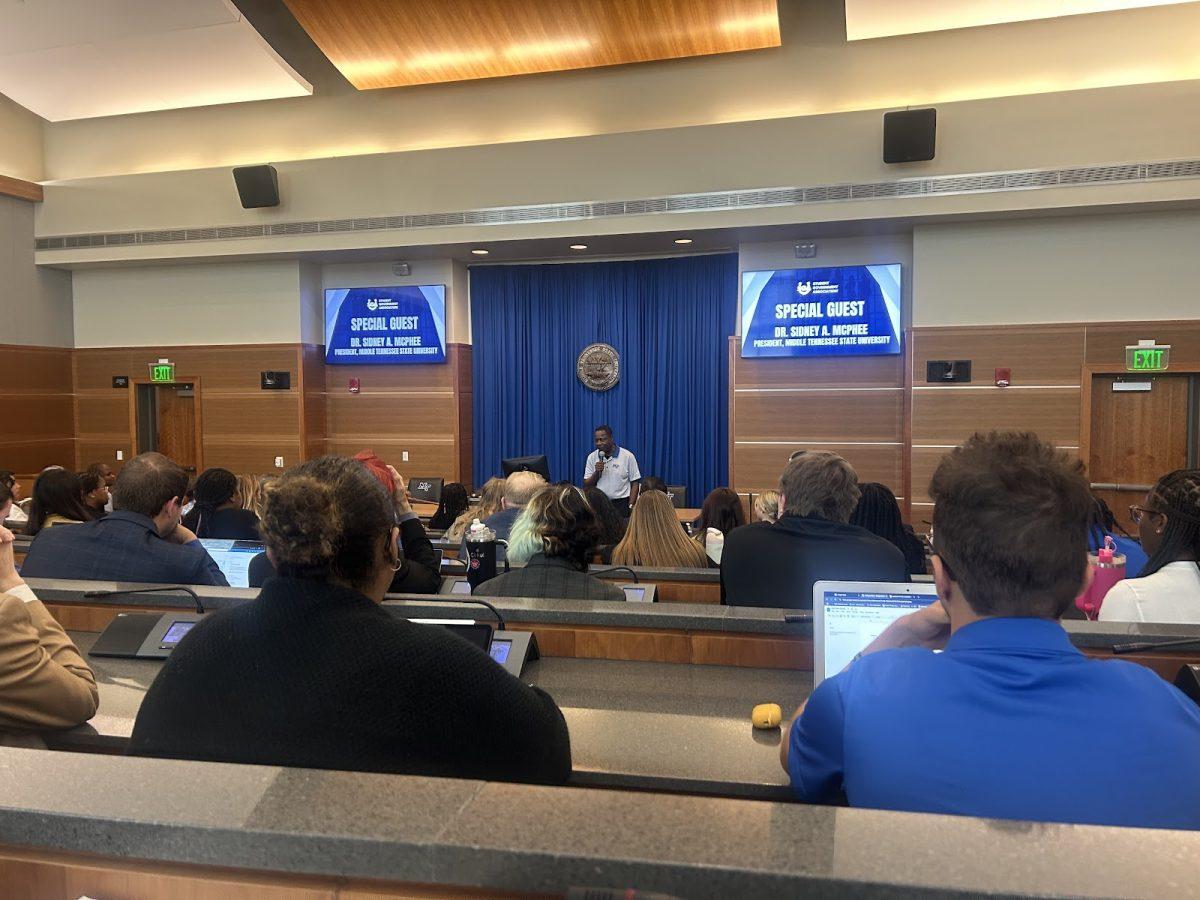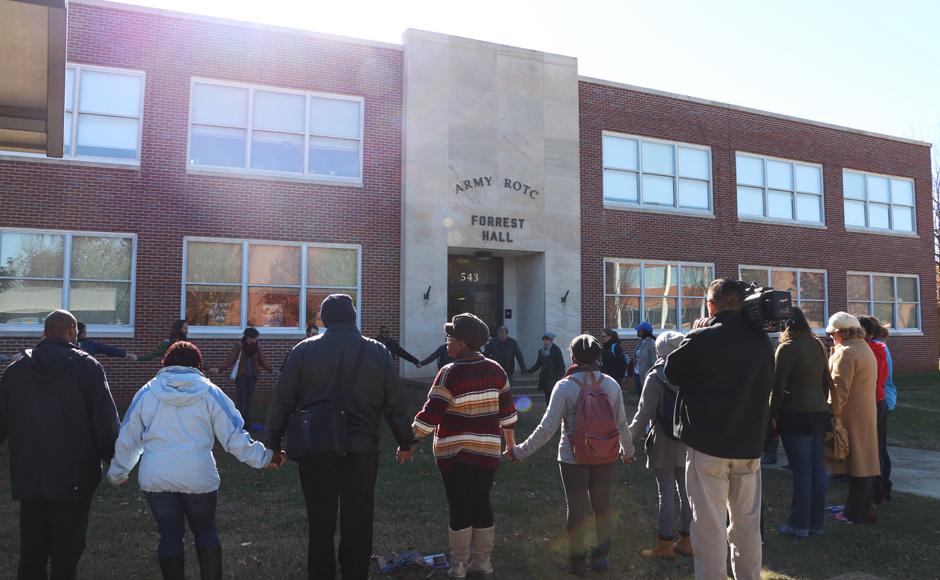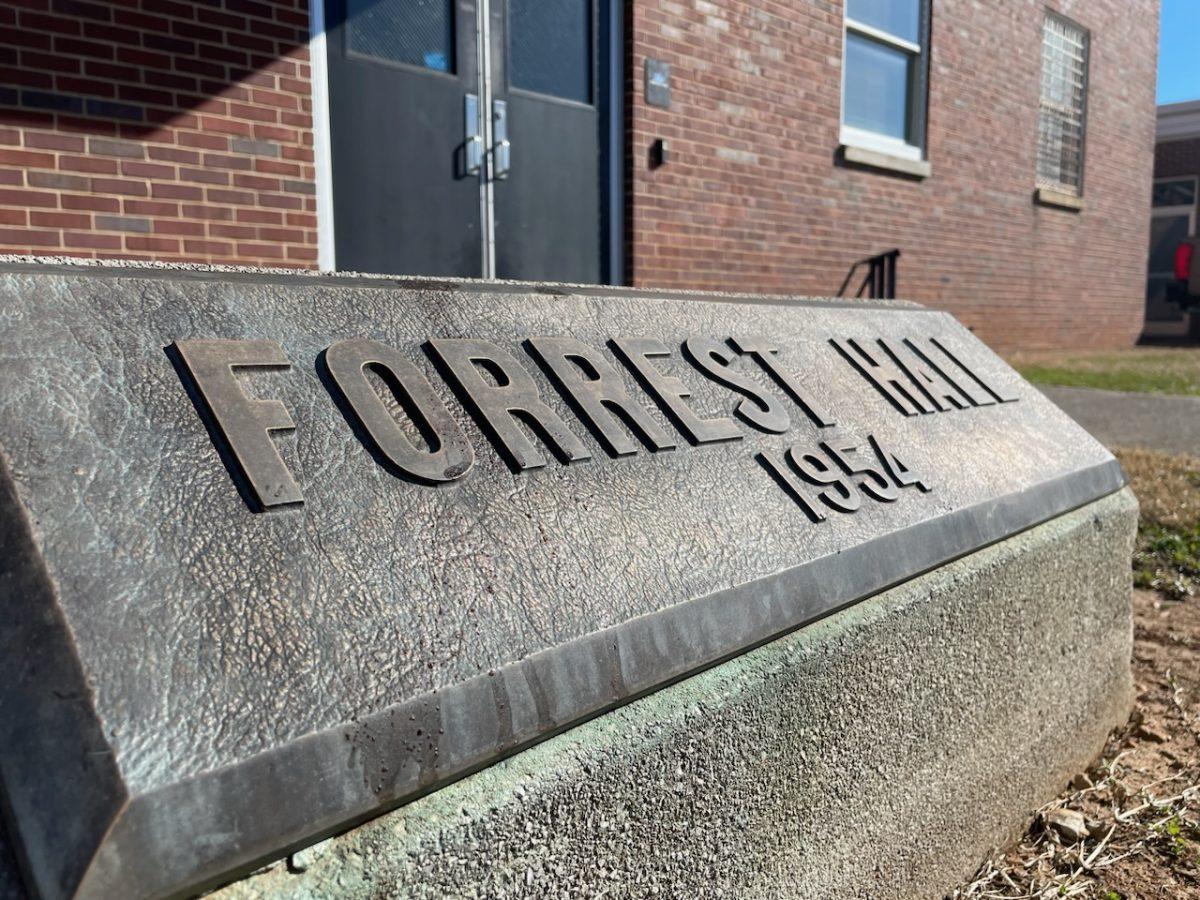Nathan Bedford Forrest, a Confederate general in the American Civil War, still holds a presence at Middle Tennessee State University as long as his name remains on the university’s ROTC building. Many students and faculty have long expressed a desire to change the building’s name, though attempts to do so have fallen short.
Why can MTSU not change the lettering on one of its own buildings?
In 2013, the Tennessee General Assembly passed the Tennessee Heritage Protection Act, which rendered it illegal to rename or remove any public monument to a “historic conflict.”
The bill included a provision allowing the Tennessee Historical Commission to be petitioned to grant a waiver allowing a monument to be rededicated “based on historical or other compelling public interest.”
In June 2015, MTSU President Sidney A. McPhee formed a task force to gauge student and community interest in renaming Forrest Hall. After extensive research and multiple public town halls, the task force recommended the university move forward and petition for a waiver on April 21, 2016.
Soon thereafter, the U.S. saw an increase in political unrest regarding the removal of Confederate monuments. The most infamous was the June 2015 shooting at a church in Charleston, South Carolina, which resulted in the deaths of nine people. The shooting is widely seen as the moment the debate about Confederate iconography in public spaces went mainstream.
In response, the Tennessee General Assembly amended the code in 2016. The commission now requires a two-thirds majority vote to grant a waiver, as opposed to the original code’s required simple majority.
This was a polarizing time in America and in Murfreesboro. Two opposing camps quickly formed, and neither was afraid to voice its opinion.
Groups like The Sons of Confederate Veterans and MTSU’s chapter of Military Science Alumni publicly made their respective cases for keeping the name.
The Rutherford County NAACP released a statement saying, “We, NAACP would like the Forrest Hall Task Force Committee to consider the request of the faculty, staff, students and alumni as well as the community to move forward by placing the name of Nathan Bedford Forrest and his military experiences in a museum.”
The Sons of Confederate Veterans Nathan Bedford Forrest Camp #215 filed a formal rebuke of MTSU’s petition on Dec. 20, 2017. This meant the SCV’s arguments had to be considered when the commission met to vote.
On a cold February morning nearly two years after the name change was officially proposed, the commission met on the third floor of the Tennessee Tower to vote.
“It is DETERMINED that Petitioners failed to demonstrate, by clear and convincing evidence, that a material or substantial need for a waiver based on historical or other compelling public interest exists and therefore the petition for waiver is hereby DENIED,” the commission wrote in its final order about the five-hour hearing.
Just like that, the effort to change the name was back to square one. But that was not the first time students and the university had tried and failed.
In 2006, a handful of students gathered signatures and presented an argument to the Student Government Association in favor of changing the name of Forrest Hall. SGA passed a referendum in favor of the name change, and talks between the university and student organizations began.
However, a group of students who wanted the name to remain began taking action. They gathered signatures and even had community organizations like the Sons of Confederate Veterans and MTSU’s Military Science Alumni Chapter make statements on their behalf.
This division spread all the way up to MTSU’s Board of Trustees, and the plan was eventually scrapped.
On June 23 of this year, McPhee issued a public notice that MTSU plans to petition the commission once again, but the process will take at least six months.
For the time being, there is no way of knowing how the commission will vote, or if the Sons of Confederate Veterans will submit another rebuttal.
Questions remain: What if the commission votes against the change again? If so, what options does the university have? There are not many.
If MTSU began a renovation project that resulted in Forrest Hall’s destruction, then the name of the building in its place would be decided by the university and the Board of Regents.
Alternatively, the building could be deemed unsafe for public use and condemned.
Although it may take years, condemnation appears to be the best option for changing the name if the commission votes no again. The almost 70-year-old building was designed and built hurriedly with the money from a budget surplus left from a statewide building push in the 1950s.
There have been no large-scale renovation projects in Forrest Hall, but the Department of Military Science has been attempting to raise money to do so.
For students who hope to see the name of the first Grand Wizard of the Ku Klux Klan and Confederate Brigadier General removed from their modern campus, there remains a glimmer of hope.
For the first time since being given the authority to do so, the Tennessee Historical Commission approved the removal and relocation of three Confederate busts from the Tennessee State Capitol.
Something similar could happen on MTSU’s campus, too.
Professor Derek Frisby, head of the Forrest Hall Task Force, said if students want to see the change, they need to make their voices heard.
“Students who are interested…can write to their legislator, they can tell their representative that they want the law to stay or [be] abolished.” He said students and the community can also send in their comments to the Tennessee Historical Commission.
“Go where the votes are,” Frisby said.
Noah McLane is the environmental reporter for MTSU Sidelines.
To contact News Editor Kailee Shores, Assistant News Editor Alyssa Williams and Assistant News Editor Zoe Naylor, email newseditor@mtsusidelines.com.
For more news, visit www.mtsusidelines.com, or follow us on Facebook at MTSU Sidelines or on Twitter and Instagram at @mtsusidelines.


